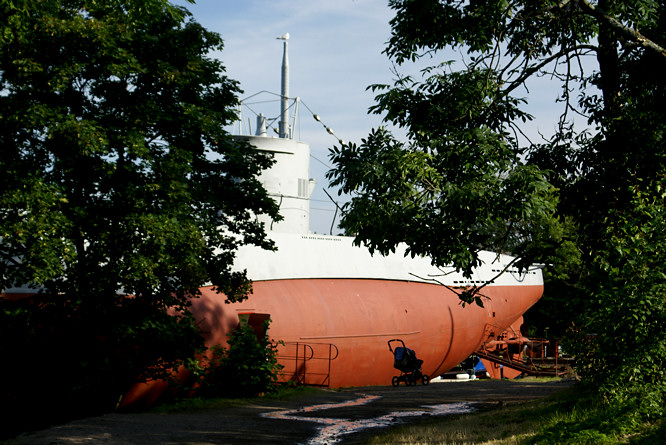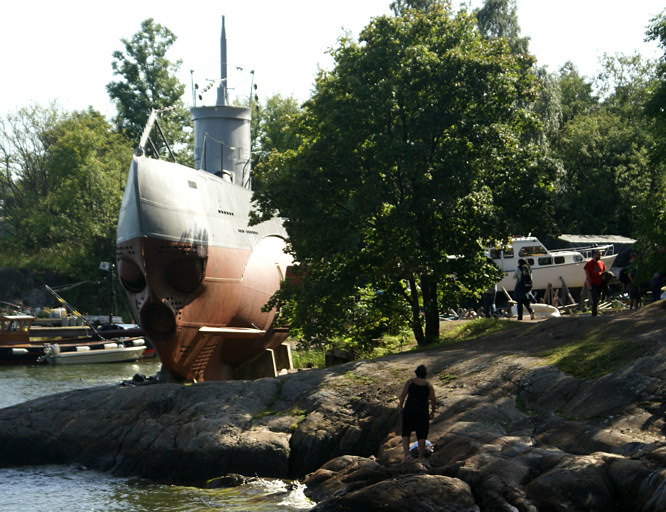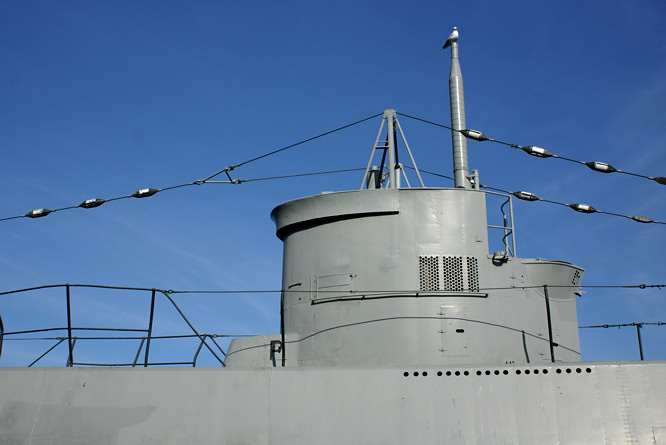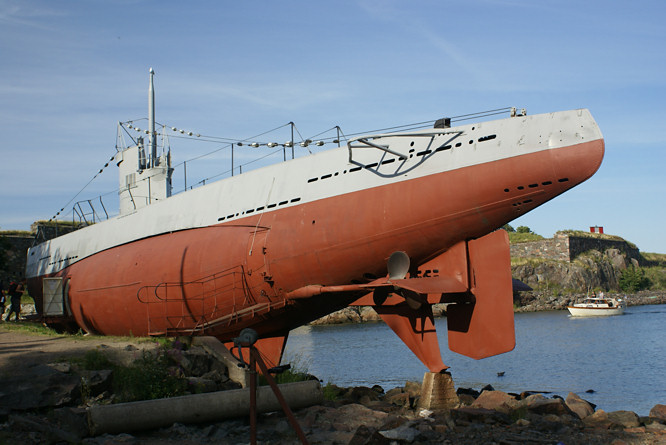The Helsinki WW2 U-boat Vesikko CV-707 of the Finnish Navy
Soumenlinna is the biggest sea fortress in the world founded in 1748 and built by Augustin Ehrensvard on five islands off the coast of Helsinki. On a boat trip from Helsinki harbour you are dropped off at the visitors centre. You pass an impressive beached submarine Uboat that was built in 1933 before world war 2.

It was turned into a Navy Military museum in 1959 and house on the island of Soumenlinna. U-boat stands for underwater boat. It is one of the few surviving submarines that fought during World War two. When it was launched it was very hi-tech.
The Helsinki Finish Navy submarine was called Vesikko. It is considered as a prototype for the German Navy IIA class U-boat. In the early 1930's the Crichton-Vulcan shipyard in Turku, Finland built three 500-ton submarines of Vetehinen-class for the Finnish Navy. After World War One Germany was not allowed to build up its army navy and airforce.

Germany totally ignored this and by various devious means continued to develop new weapons. Finland was a trading partner with Germany. The German firm Ingenieurskantoor voor Scheepsbow den Haag that had been set up 1922 in the Netherlands to evade the peace treaty of Versailles, designed the u-boats and supervised the construction.
The Vetehinen-class was a 250-ton small coastal submarine and was a success. The submarine, was initially called CV-707 after its shipyard order number. It was launched on May 10, 1933. The Germans liked the U-boat and ordered 6 to be built for their own Navy but this time at the shipyard at Kiel, Germany. Vesikko was one of five submarines to serve the Finnish Navy.

The other four were the three larger Vetehinen-class U-boats Vetehinen, Vesihiisi, Iku-Turso, named after Finnish mythology characters and the small Saukko, Finnish for otter. The word 'vesikko' is the Finnish name for the European mink, a small predator now near extinction, already extinct within Finland.
In 1935 the submarine was formally added to the Finnish Navy list and given the name Vesikko. When the Soviet Union attacked Finalnd on November 30, 1939 Vesikko was ordered to patrol the Gulf of Finland. On 1 December and 19 December 1939, Vesikko made attempts to attack the Soviet heavy cruiser Kirov and battleship Marat, both of which had been damaged by Finnish coastal batteries.

When war broke out again in June 1941 against the Russians, Vesikko and the other ships of the submarine flotilla were ordered to the eastern Gulf of Finland. In July 1941 east of Hogland, she torpedoed, the Russian merchant Vyborg. In 1942 and 1943 due to the vast mine fields and nets the Soviet fleet was isolated at Leningrad and Vesikko. The did not come out of harbour so there were no targets to torpedo.
According to the armistice of Sept 19, 1944 with the Soviet Union, the Finnish Navy submarines were ordered back to their bases. Finland declared war against Germany but submarines were never used against the new enemy. In December 1944 Vesikko made her last voyage as a warship and in January 1945 the allied supervisory commission ordered the Finnish submarines to be disarmed. Finland was looked upon as being on the German side during the war.
The peace treaty of Paris in 1947 prohibited Finland to keep submarines and they were all sold to Belgium as scrap iron in 1953, except Vesikko. In 1959 the ship was conveyed to the island of Soumenlinna and is now an exhibit of the Military Museum of Finland. It is open 12th May - 31 August daily 11 am - 6 pm.
The Vesikko is 4.1 meters (134.2ft) long. It has a 700 hp 520kw Diesel-electric engine. On the surface it has a top speed of 13 knots (24 km/h) and submerged 8 knots (15 km/h). Underwater it had a range of 2,500 km when on the surface but only 70km submerged before it had to come up. It had a crew of 17-20 men. It was armed with 5 whitehead torpedoes, 20 mines, 1x 20mm anti aircraft gun and 1x 7.26 mm anti aircraft machine gun on the bridge. The Vesikko only took 45 seconds to crash dive to 9.3 meters.
Travel books

